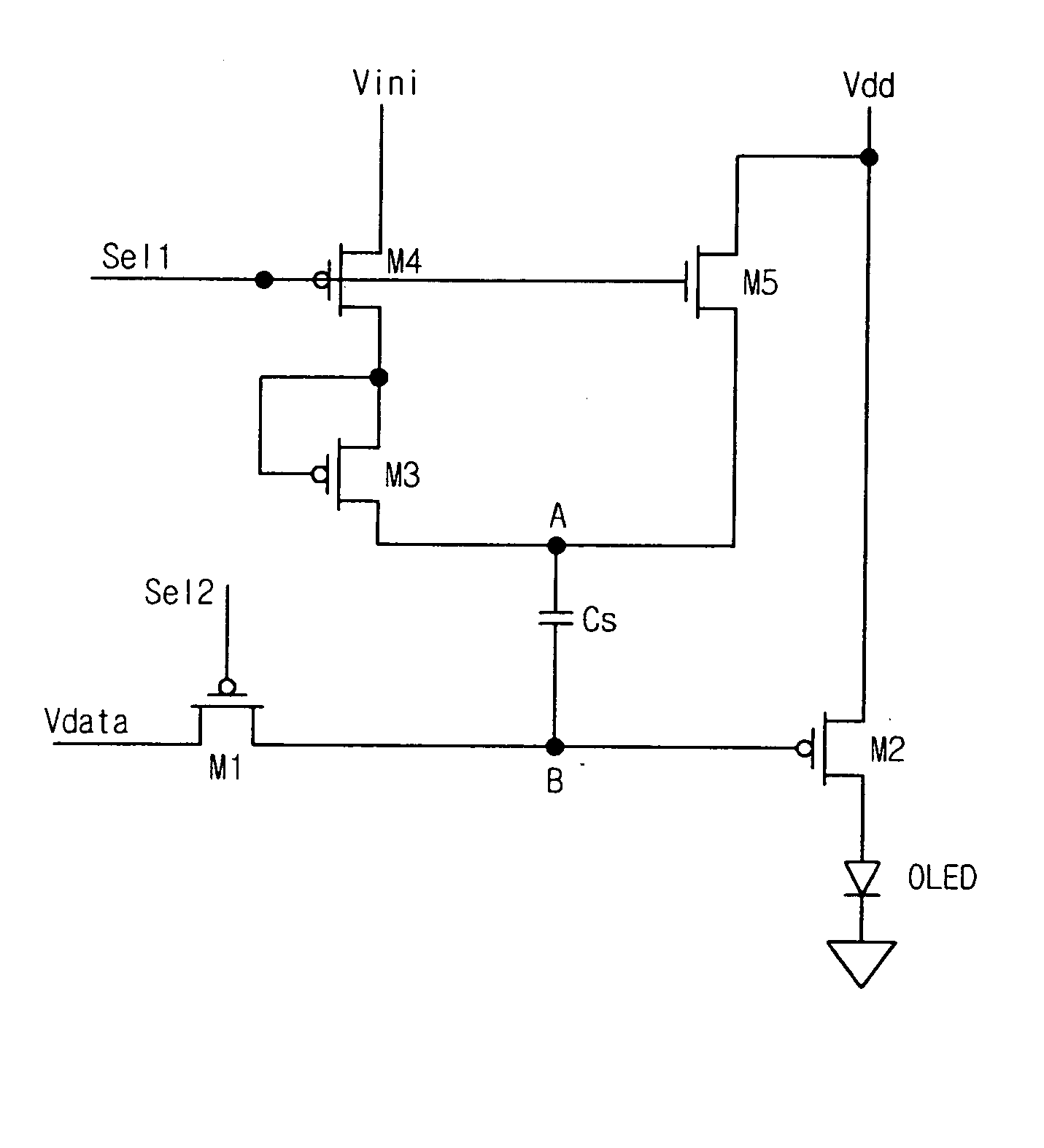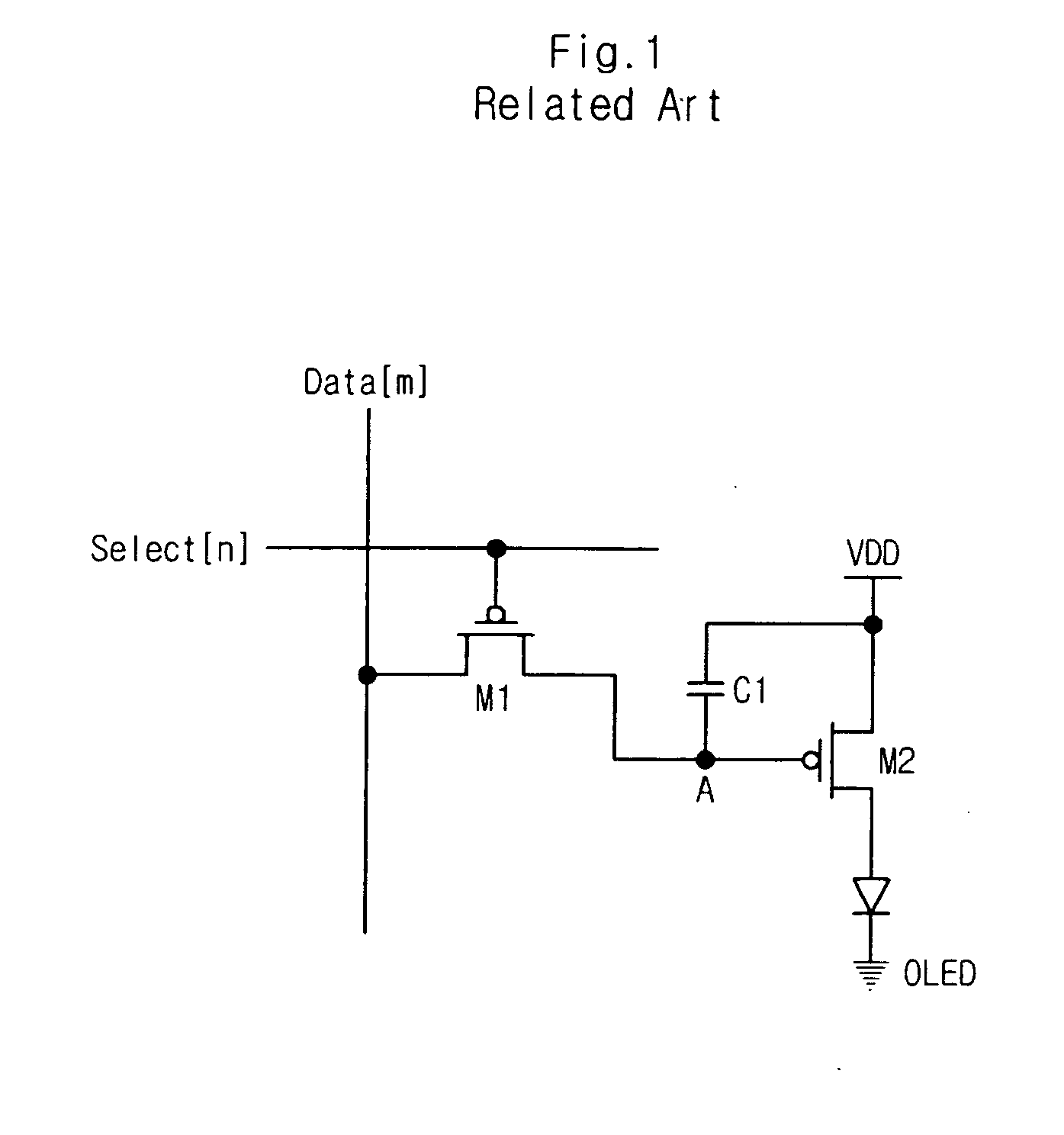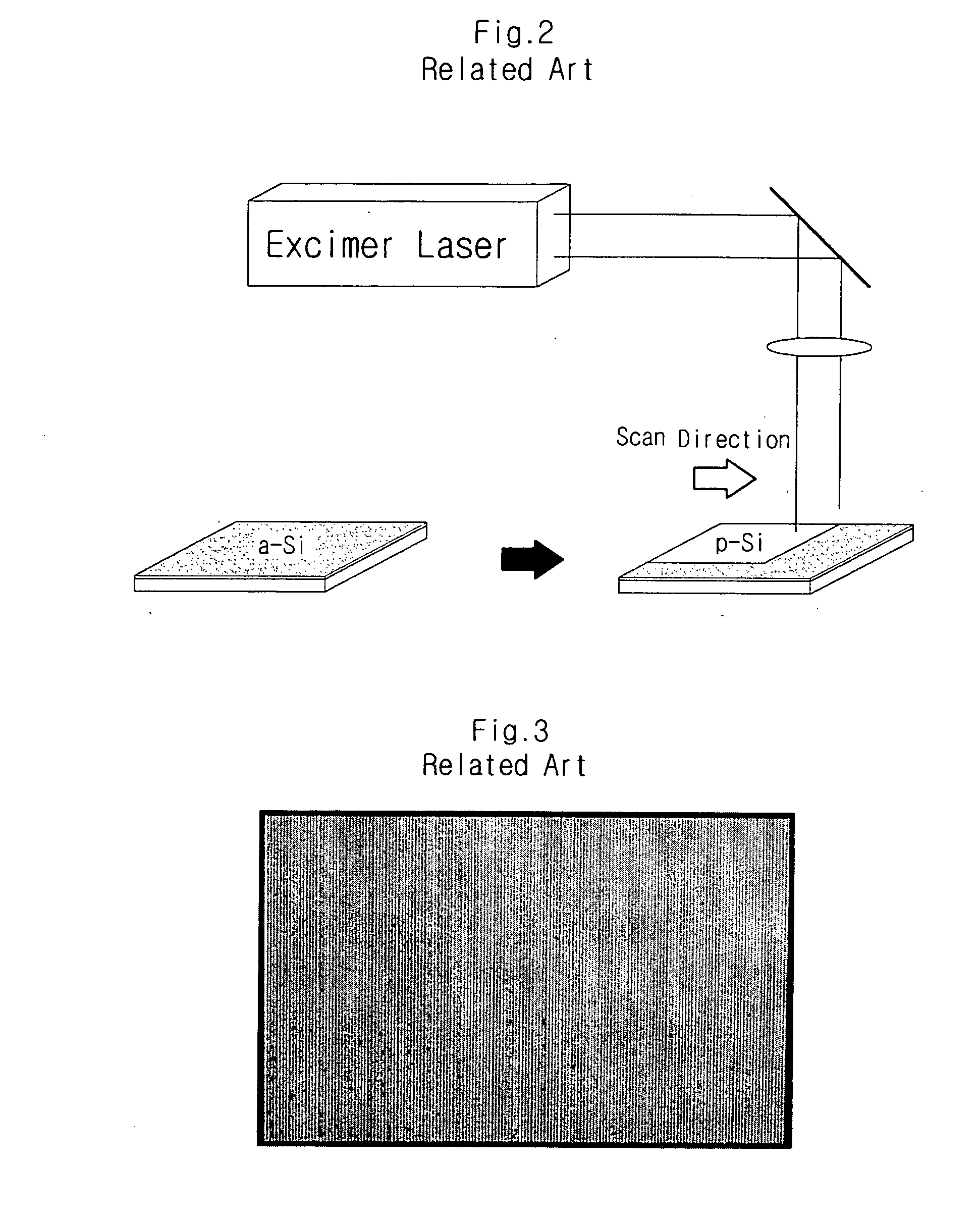Organic light-emitting device
- Summary
- Abstract
- Description
- Claims
- Application Information
AI Technical Summary
Benefits of technology
Problems solved by technology
Method used
Image
Examples
first embodiment
[0049]FIG. 4 illustrates a pixel of an organic light-emitting device according to the invention, which typically illustrates one of the N×M pixels.
[0050] Referring to FIG. 4, the inventive organic light-emitting device complementarily supplies a first selection signal (Sel1) to each of gate electrodes of fourth and fifth transistors M4 and M5. At this time, an initiation voltage (Vini) is supplied to a source electrode of the fourth transistor M4. A source electrode of a third transistor M3 connects to a drain electrode of the fourth transistor M4, and a first node (node A) connects to a drain electrode of the third transistor M3. Here, the fourth and fifth transistors M4 and M5 may have opposite polarities. Accordingly, if the first selection signal (Sel1) turns-on the fourth transistor M4, the fifth transistor M5 then turns-off. In contrast, if the fourth transistor M4 is turned-off, then the fifth transistor M5 is turned-on. That is, the signal to M4 is inverted in M5.
[0051] Whe...
second embodiment
[0078]FIG. 7 illustrates a pixel of an organic light-emitting device according to the invention, and typically illustrates one of N×M pixels.
[0079] The organic light-emitting device of the second embodiment of the invention shown in FIG. 7 has similarities with the organic light-emitting device according to the first embodiment of the invention shown in FIG. 4. However, the organic light-emitting device according to the first embodiment of the invention uses a CMOS transistor having opposite polarities as fourth and fifth transistors M4 and M5 to concurrently apply a first selection signal (Sel1) to the fourth and fifth transistors M4 and M5. That is, the fourth transistor M4 is composed of a PMOS transistor, and the fifth transistor M5 is composed of an NMOS transistor. Therefore, if the fourth transistor M4 is turned-on by the first selection signal (Sel1), then the fifth transistor M5 is turned-off.
[0080] In comparison, the organic light-emitting device according to the second e...
third embodiment
[0084]FIG. 8 shows a view illustrating a pixel of an organic light-emitting device according to the invention, and typically illustrates one of a display having N×M pixels.
[0085] The organic light-emitting device according to the second embodiment of the invention shown in FIG. 7 allows an organic light-emitting diode (OLED) to pass a high current during a first period (that is, reset period) for which a low reset voltage is applied by the second selection signal (Sel2). Accordingly, the organic light-emitting device has difficulty expressing a dark grayscale, and the device also has a reduced contrast ratio.
[0086] In the organic light-emitting device according to the third embodiment of the invention shown in FIG. 8, a sixth transistor M6 is connected between a second transistor M2 and the organic light-emitting diode (OLED), and the sixth transistor M6 is controlled by a separate fourth selection signal (Sel4). That is, a data voltage having a low reset voltage level is applied t...
PUM
 Login to View More
Login to View More Abstract
Description
Claims
Application Information
 Login to View More
Login to View More - R&D
- Intellectual Property
- Life Sciences
- Materials
- Tech Scout
- Unparalleled Data Quality
- Higher Quality Content
- 60% Fewer Hallucinations
Browse by: Latest US Patents, China's latest patents, Technical Efficacy Thesaurus, Application Domain, Technology Topic, Popular Technical Reports.
© 2025 PatSnap. All rights reserved.Legal|Privacy policy|Modern Slavery Act Transparency Statement|Sitemap|About US| Contact US: help@patsnap.com



